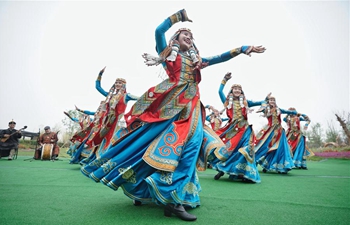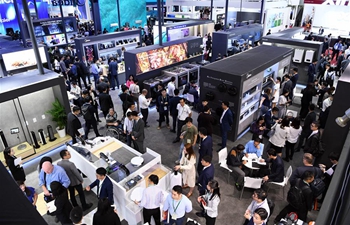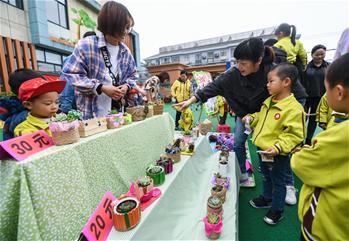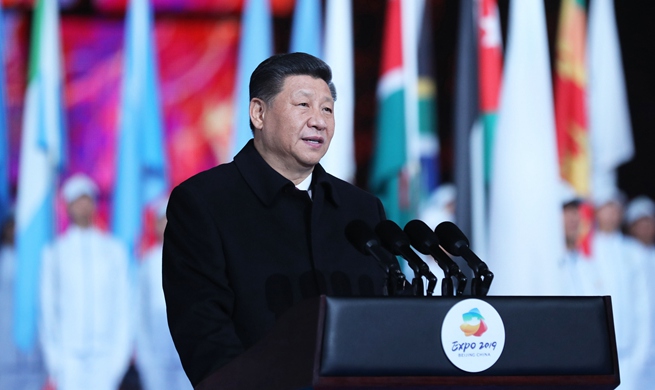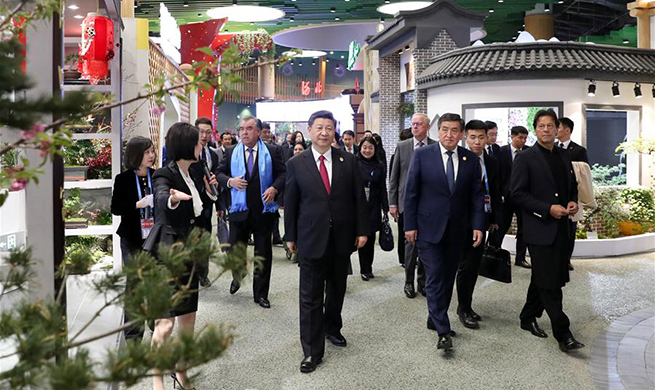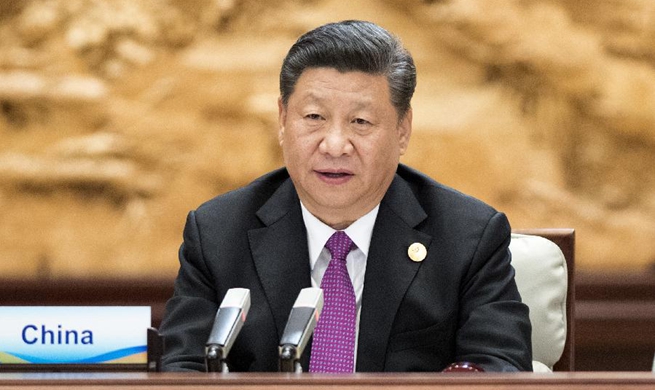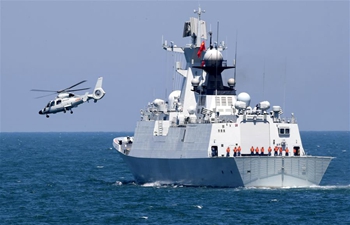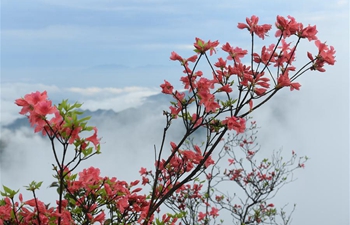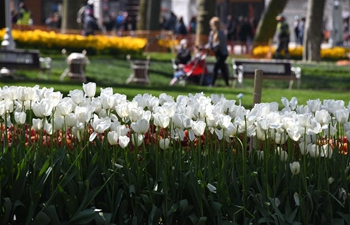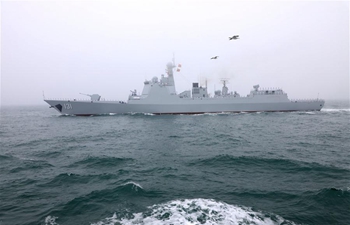SEOUL, April 29 (Xinhua) -- Peace efforts have lasted on the Korean Peninsula for the past year since the two Koreas held their third summit in the border village of Panmunjom inside the demilitarized zone (DMZ), which has divided the peninsula for decades.
On April 27, 2018, Kim Jong Un, top leader of the Democratic People’s Republic of Korea (DPRK), was greeted by South Korean President Moon Jae-in and shook hands with him just above a concrete slab in Panmunjom, which serves as the military demarcation line (MDL).
Walking across the MDL into the South Korean side of Panmunjom, Kim became the first DPRK leader to step onto South Korean soil since the 1950-53 Korean War ended with an armistice.
The Moon-Kim summit, the first held in Panmunjom as both of the previous two inter-Korean summits in 2000 and 2007 were held in Pyongyang, confirmed a common goal of the complete denuclearization of and the lasting peace in the Korean Peninsula.
Kim said in his guestbook message that a new history began in an era of peace, while Moon said Panmunjom was changed into a symbol of peace from the one of division as Kim set foot on the South Korean territory.
The Panmunjom summit was a significant turning point in situations surrounding the peninsula as it was followed by the first-ever DPRK-U.S. summit in Singapore last June, when Kim and U.S. President Donald Trump re-affirmed the complete denuclearization of and the permanent peace in the peninsula.
Two months later, the face-to-face reunion of Korean families, separated by the Korean War, was held in the DPRK’s scenic resort of Mount Kumgang as it was the most urgent humanitarian issue for the aged survivors. South Korea was currently pushing for the video reunion and the exchange of video letter between the separated families.
To alleviate military tensions, Moon and Kim met in Pyongyang last September. During the third Moon-Kim summit, defense chiefs of the two Koreas signed a comprehensive military agreement to set up buffer zones in inter-Korean border areas.
Under the military agreement, South Korea and the DPRK demolished 11 of their guard posts inside the DMZ each, one of which the two sides decided later to preserve for a historical value. There remains around 50 South Korean and about 150 DPRK guard posts each inside the DMZ.
The two sides also disarmed the Joint Security Area (JSA), the only portion of the DMZ where soldiers from the two Koreas stand face to face, by withdrawing all firearms, ammunition and guard posts.
A joint liaison office for the round-the-clock communications between the two sides opened last September in the DPRK’s border town of Kaesong, after the restoration of all inter-Korean communication channels such as the military hotline.
A groundbreaking ceremony was held last December in Kaesong, just 70 km north of Seoul, to modernize and link railways and roads across the inter-Korean border along the eastern and western peninsula. Construction works had yet to be launched due to international sanctions against Pyongyang.
The ongoing positive developments were in line with China’s “dual-track” approach of advancing denuclearization of the peninsula while establishing a peace mechanism.
President Moon said in his New Year press conference in January that China has played a positive role in “helping very much the Korean Peninsula’s denuclearization and the improved inter-Korean relations.”
